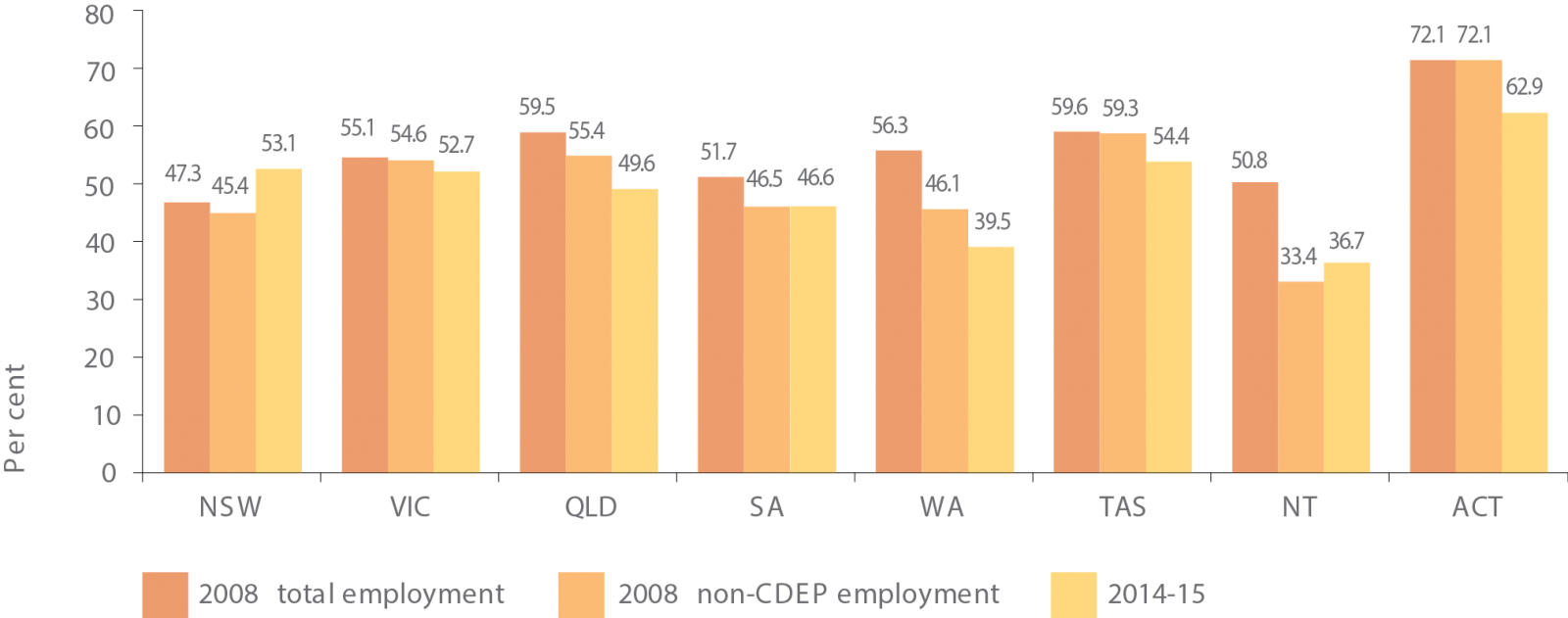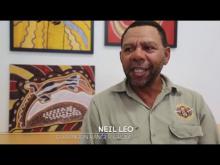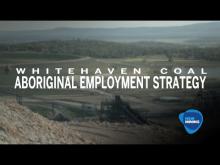“Through one life-changing job placement at a time, every minute of every day, we will continue to chip away at the disabling issue of intergenerational welfare dependency. Change is occurring. Creating expectation, delivering quality education and providing opportunities through employment will continue to be the change agents that will empower our people and communities. The AES has achieved 20,000 job placements in 20 years. We will not walk away from the wicked challenges in our communities. Together we will face them, and together we will succeed.” - Kristy Masella, CEO, Aboriginal Employment Strategy
Indigenous defence force careers

"I am very proud of the people we have become and the new outlook we have on life." - Kelly Curry, Indigenous Development Program participant
Find out more on Indigenous defence force careers
Along with building skills and financial independence, being employed contributes to overall wellbeing. Having a job opens up other opportunities and contributes to improving living standards. It also has a positive flow-on effect for family members and the community more broadly.
target
Halve the gap in employment outcomes between Indigenous
and non-Indigenous Australians within a decade (by 2018).
- This target is not on track. However, Indigenous employment rates are considerably higher now than they were in the early 1990s. Over the years, softening of the labour market has impacted adversely on employment prospects.
- In 2014-15, the Indigenous employment rate was 48.4 per cent, down from 53.8 per cent in 2008. However, the non-CDEP Indigenous employment rate was flat (48.4 per cent in 2014-15 compared to 48.2 per cent in 2008).
- There is a strong link between education and employment – at high levels of education, there is virtually no employment gap between Indigenous and non-Indigenous Australians.
- Governments are setting targets for Indigenous procurement and employment and corporate Australia has been putting in a concerted effort to provide employment opportunities for Indigenous Australians.
National analysis
This target is not on track. The Indigenous employment rate fell from 53.8 per cent in 2008 to 48.4 per cent in 2014-15. The non-Indigenous employment rate also declined from 75.0 per cent in 2008 to 72.6 per cent in 2014-15.1 The gap has not changed significantly (21.2 percentage points in 2008 and 24.2 percentage points in 2014-15). This occurred in the context of a general softening in the labour market over this period.
Another important factor in the fall in the Indigenous employment rate is the gradual cessation of Community Development Employment Projects (CDEP)2 over this period. The non-CDEP Indigenous employment rate remained flat from 48.2 per cent in 2008 to 48.4 per cent in 2014-15.
While there has been no progress against this target there have been some longer-term improvements. The Indigenous employment rate was considerably higher in 2014-15 (48.4 per cent) than 1994 (37.6 per cent) (see Figure).
Figure 13: Indigenous working age (15-64) employment rates, 1994 to 2014-15 (per cent)
.png)
View the text alternative for Figure 13.
State and Territory Progress
New South Wales was the only jurisdiction that saw an improvement (albeit not significantly) in Indigenous working age (15-64) employment rates between 2008 (47.3 per cent) and 2014-15 (53.1 per cent) (see Figure). Between 2008 and 2014-15, changes in employment rates in Victoria, South Australia, Tasmania and the Australian Capital Territory were not statistically significant.
In Queensland, Western Australia and the Northern Territory, employment rates decreased significantly between 2008 and 2014-15. However, interpretation of trends in Indigenous employment in these jurisdictions is affected by the decline in CDEP participants between 2008 and 2014-15. Between 2008 and 2014-15, there was no statistically significant change in the non-CDEP employment rate for these jurisdictions.
Figure 14: Indigenous working age (15-64) employment rates, by state/territory, 2008 and 2014-15 (per cent)

View the text alternative for Figure 14.
In 2014-15, the gap between Indigenous and non-Indigenous total employment rates had decreased since 2008 in New South Wales. The gap for New South Wales is smaller than the gap required to meet the trajectory point for the target in 2014-15, and is therefore, on track. In all other jurisdictions the gap in employment rates significantly increased during this time, apart from Victoria where the increase was not statistically significant.
More information and data is available in the full Closing the Gap Prime Minister's Report 2017.
National policy to drive improvement in employment outcomes
While gains in employment outcomes for Indigenous Australians have been hard won, we have seen a concerted effort across government and big business to bring more Aboriginal and Torres Strait Islander people into the workforce. We also know that Indigenous students who graduate from university are more likely to gain employment.
Our Indigenous Procurement Policy (addressed in further detail in Chapter 5) has seen a significant increase in the number of Commonwealth contracts being awarded to Indigenous businesses, which has a flow-on effect for Indigenous employment. We are introducing Indigenous employment and supplier targets in our big infrastructure projects and encouraging big business and state and territory governments to do the same.
All governments have agreed to consider establishing state-specific whole-of-government Indigenous procurement policies and Indigenous employment and Indigenous business targets. Many of the programs that deliver services to the community, such as the National Disability Insurance Scheme, provide an excellent pathway for Indigenous employment.
In addition, utilising Indigenous culture and knowledge, particularly in land and sea management, establishes two-way learning practices while providing career opportunities, often in rural and remote areas.
Local solutions
Truwana Rangers caring for country in Tasmania
Around Australia, Indigenous Rangers are working hard caring for their country – they are looking after endangered native animals and ecosystems, stopping feral animals from damaging waterholes and performing controlled burnings.
Find out more on the Truwana Rangers local solution
More local solutions are available on the resources page
[1] Comparisons with non-Indigenous Australians for this target are sourced from the ABS Survey of Education and Work 2008 and 2014
[2] CDEP was a Commonwealth employment program in which participants were paid CDEP wages (derived from income support) to participate in activity or training. As CDEP was wound down and participation declined, many of these individuals transferred across to other employment services such as Remote Jobs and Communities Program, where they received income support and were then counted as unemployed. For 2014- 15 the ABS did not collect information on CDEP participation as the number of CDEP participants was negligible.



